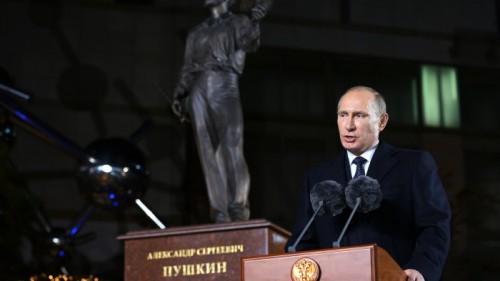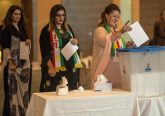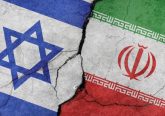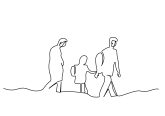The crisis in Ukraine has produced a new narrative about Vladimir Putin’s leadership. In contrast to the stated modernising goals of his first two presidencies – the achievement of greater state efficacy and the improvement of living standards and prosperity for ordinary Russian citizens – Putin has been recast as the saviour of the Russian nation. This new narrative includes a mission to protect the citizens of the ‘Russian World’ that live beyond the borders of the Russian Federation. In some analysis, this has led to parallels with Slobodan Milosevic’s political journey in the former Yugoslavia (Whitmore, 2014).
Yet, while Vladimir Putin has shown strong patriotic instincts throughout his political career, he is not a natural nationalist. In an article titled ‘Russia: The Ethnicity Issue,’ which Putin published in January 2012 ahead of the presidential election, his ambiguous support for ethnically-based nationalism was apparent. He warned about the dangers that ethnic chauvinism posed to the territorial integrity of the Russian state: ‘I am convinced that the attempts to preach the idea of a “national” or monoethnic Russian state contradict our thousand-year history,’ he averred, ‘this is a shortcut to destroying the Russian people and Russian statehood, and for that matter any viable, sovereign statehood on the planet’ (Nezavisimaya Gazeta, 2014). Moreover, his regime’s relationship with the nationalist leadership in eastern Ukraine, and their ideological backers in Russia, has not always been cordial during the Ukrainian conflict. Putin’s commitment to the creation of a new territory, ‘Novorossiya,’ which would lead to the breakup of Ukraine, has been questioned by nationalist ideologues and militia leaders throughout the crisis (Sonne, 2014).
Nor has Putin’s public support base been drawn over the years mainly from the nationalist political camp. Rather, public opinion evidence from the early and mid-2000s (Whitefield, 2005, 2009) indicates that Putin and his government was significantly less likely to be supported by nationalist and anti-Western citizens and that there were only very limited differences socially and ideologically between his supporters and those for so-called liberal politicians. Indeed, Putin’s political success may have been founded on his relative centrist and modernising stances: an organised and strong state, and one which deliberately made political use of the Soviet past, but not ethno-nationalist or anti-Western.
To explain the new narrative of Putin and Putinism, we argue, it is necessary to examine the political strategy that defined Putin’s return to power in 2012. This strategy emerged in response to the threat that Russian nationalism posed the Putinite system in the aftermath of the 2008-09 financial crisis. This crisis discredited the modernising agenda that framed Putin’s first two presidencies, and undermined the regime’s previous support base. The potential for a nationalist backlash was evident in the nationalist support for the electoral protests against the Putin regime in 2011-12, and in the strategies for counter-mobilisation that drove Putin’s fight back in 2012. Thus, we argue that the Ukrainian crisis has reinforced a trend that was already present prior to Russia’s annexation of Crimea. But we also contend that the crisis has raised the stakes for the Putin regime. If Putin fails to deliver in Ukraine, the possibility of a challenge to his authority from a more radical nationalist agenda is likely to be greater than it was before the start of the crisis.
Putin’s Contentious Return
Putin’s third presidential term was always going to be different from his previous stints in the Kremlin. In contrast to the relatively trouble-free election victories in 2000 and 2004, Putin’s election in 2012 occurred within the midst of the first serious popular political revolt against his rule. His controversial decision to return to presidential office in September 2011 – in place of incumbent Dmitry Medvedev – took place at a time of declining support for the ruling party, United Russia. Opposition forces were in the ascendant, and the proposed switching of roles with Medvedev – with the sitting president lined up as the next prime minister – divided his political allies. In the event, the parliamentary elections that were held in December 2011 provided the focus for significant protest against the regime. Mass protest took place on the streets of Russia’s main cities, with thousands of Russian citizens claiming that the elections were fraudulent.
The break that Vladimir Putin took from the presidency between 2008 and 2012 also coincided with the global financial crisis, which hit Russia in 2008. This crisis undermined the appeal of the programme of economic modernisation, which had kept Putin in power for the previous eight years. The crisis slowed down earnings growth, challenged the government’s capacity to manage the economy, and made those who were directly affected by the financial crisis less willing to put up with the negative features of Putin’s rule, such as corruption and the overconcentration of political power. It also undercut whatever vestiges of support remained for the neo-liberal, globalisation, and pro-Western model of economic development. The West was now seen to have feet of clay, while at the same time it could even more credibly be blamed for Russia’s national humiliations over the previous two decades.
Crucially, the global financial crisis eroded support and confidence in the regime. In the summer of 2009, we conducted a nationally representative survey of 1,500 Russian citizens, and found that respondents who were directly affected by the financial crisis were more likely to respond negatively to questions concerning popular support for the political leadership of the country, the efficacy of the political authorities, and the actual practice of democracy in Russia (Chaisty and Whitefield, 2012). Importantly, our analysis found that individuals who were adversely affected by the financial crisis were less willing to pledge their support either to Putin or Medvedev in a future presidential election (Chaisty and Whitefield, 2012, p. 201), and were more likely to believe that the social and political situation in the country had become less stable as a result of the global financial crisis (Chaisty and Whitefield, 2012, p. 202).
Therefore, declining support for the regime was already apparent before United Russia announced Putin as their presidential candidate in September 2012. Throughout 2011, support for the governing party fell, and claims of corruption were skilfully used by opposition leaders against the authorities. Putin’s decision to return to the Kremlin acted as the trigger for underlying discontent, which focused on the 2011-12 electoral cycle. The parliamentary elections of 2011 provided an opportunity for protest from opponents of the regime who held a variety of grievances. Significantly, support for the protests came not only from the usual suspects – supporters of Western-style political democracy – but also from nationalists who rejected the Western path of political and economic transition.
The Nationalist Threat
Radical nationalist opposition to Putin’s decision to return to the presidency was evident in the political makeup of the protests that took to the streets of Russia’s cities, in particular Moscow. The sight of nationalist yellow-and-black banners, mixed in among the distinctive colours of Russia’s leftist and democratic opposition, was a vivid signal to the Kremlin that protest against the regime covered the entire political spectrum. Yet, this opposition was not only confined to the relatively small numbers of committed nationalist activists who took to the streets in December 2011. A far greater problem for the Kremlin was the mass basis for such views among citizens who supported the protests.
In our work, we have researched the attitudes of those who supported the electoral protests of 2011 (Chaisty and Whitefield, 2013). We conducted a nationally representative survey of 1,200 Russian citizens in the week after the presidential elections of 2012. Of those that we surveyed, almost half (47 per cent) agreed with the statement that the protests were justified. This figure was comparable to the results of Russian polling agencies, notably the Levada Centre, at this time. Our analysis of the demographic and attitudinal characteristics of the supporters of the electoral protests was revealing. We found that supporters of protest tended to be concentrated in the main metropolitan centres of Moscow and St. Petersburg; their support for the protests was motivated by opposition to Putin’s decision to return to the presidency; and their political attitudes were not, as was a common narrative in the Western press at the time, supportive of a Western path of political transition as in the Orange Revolution – instead, supporters of protest were more likely to support authoritarian solutions to Russia’s problems, and were likely to hold strong ethno-nationalist views.
This normative orientation of those who backed the electoral protest against the regime posed Putin a number of serious problems on his return to power. The potency of authoritarian and ethno-nationalist attitudes among his critics were in addition to the effects of metropolitan residence and opposition to his decision to return for a third term. For example, controlling for other predictors, we found that those who strongly agreed with ethno-nationalist statements (e.g. Jews have too much power and influence in Russia) were 18 per cent more likely to support protest than those who disagreed, and those who agreed that the overthrow of democracy would be justified if it solved the country’s problems were 25 per cent more likely to support protest (Chaisty and Whitefield, 2013, p. 9).
Given the underlying problems facing Russia’s leadership – predictions of future economic crises and growing discontent with systemic corruption – the regime was particularly sensitive to this opposition. In response, the Kremlin set about building a new majority that would drive Putin’s third presidential campaign. This campaign involved more direct engagement with nationalist themes.
Putin’s Fight Back
The Kremlin’s concern about the nationalist threat can be seen in the nature of the counter-mobilisation campaign that was organised in the immediate aftermath of the December protests. Pro-Kremlin rallies centred on patriotic themes that would provide the basis for Putin’s presidential election campaign. In place of the earlier emphasis on modernisation, which had been the buzzword of the Medvedev presidency, the focus moved in a conservative direction, with greater prominence given to themes of order and the need to protect the state.
Particularly revealing were the individuals involved in the counter-mobilisation activities of early 2012. Conservative and nationalist intellectuals like Sergei Kurginyan and Alexander Dugin participated in events aimed at rallying support for the authorities, as well as other individuals associated with late Soviet-era patriotic and nationalist politics. This constituency had been largely peripheral in front-line Russian politics since the early 1990s. They have advocated a worldview that has been sharply critical of the direction of change that has taken place in Russia since the collapse of the Soviet Union. Thus, the authorities were compelled to draw strength from individuals who were not natural bedfellows. During the constitutional crisis of October 1993, for example, many of these individuals had backed an uprising against the regime that Putin helped to consolidate. The fact that, twenty years later, this voice was called on to help the same regime to revive its support, and later provide intellectual and military leadership for an armed insurgency in eastern Ukraine, underlines the leadership’s predicament.
Nonetheless, this strategy was successful politically. Putin succeeded in mobilising enough support to win the presidential elections on the first round with 64 per cent of the vote. Since then, the regime has promoted a conservative agenda that has consolidated this support and marginalised those opposition politicians who threatened to make a breakthrough in late 2011. The conservative campaign – energised by such high-profile incidents as the arrest and imprisonment of the Pussy Riot punk rock feminists for their performance of an anti-Putin stunt in Moscow’s Cathedral of Christ the Saviour – succeeded in keeping Putin’s core support mobilised and, crucially, it reconnected Putin with conservatively-inclined citizens who had threatened to join with the opposition.
The Impact of Crimea
The direction of travel had therefore been established before the start of the Ukrainian crisis. The conservative agenda that emerged was politically more authoritarian, as illustrated by the backsliding over initiatives aimed to raise political competition; socially more conservative, as highlighted by the measures against sexual minorities; and more critical of Western action in the area of foreign policy. Although the effects of this strategy require more systematic analysis, which is the focus of our current research, in general the conservative agenda appears to have been successful in consolidating and mobilising Putin’s core support: state employees who have seen their living standards rise significantly under his leadership. This group shares the government’s conservative and patriotic agenda.
However, the Ukrainian crisis and Russia’s annexation of Crimea was significant in nullifying the criticisms of those who were sympathetic to anti-regime protest. It extended Putin’s support to encapsulate a broad constituency of Russian citizens, which includes both moderate patriots, who are ideologically supportive of political and economic modernisation, and more radical nationalists who reject the Western path of development (Bunin, 2014). For the moment, at least, Putin appears to have assuaged the radical constituency. The decline in anti-Kremlin nationalist mobilisation, which was evident in the comparatively low turnout by anti-regime activists in the National Unity Day marches in November 2014, provides some evidence for this.
What, then, do we conclude about Putin and Putinism? We do not see the man and the regime as defined by principled ideological nationalism. Rather, this turn to nationalism reflects a political strategy – likely to preserve the existing ‘kleptocratic’ political economy – that classically mobilises nationalism to divert attention from the regime’s failings and to put the blame for the humiliation widely said to be felt by Russians on the West and on internal political and social enemies. It is also a means of incorporating actors who were the strongest and most dangerous opponents of the regime. These, of course, were not the almost completely marginalised liberals, but rather the mobilised nationalists who took to the streets in 2011-12.
This broad coalition of core supporters, moderate patriots and more radical nationalists, accounts for the sharp spike in support for Putin during the Ukrainian crisis. Yet, the ability of the regime to maintain this coalition presents a new set of challenges. Unless the Ukrainian crisis has radically transformed the attitudes of Russian citizens, which we doubt, the Kremlin will have to satisfy a diverse range of conflicting demands. This task will be rendered more difficult by economic crisis and the international limitations to territorial expansion in eastern Ukraine. The regime’s willingness to engage with more radical nationalist ambitions, such as the creation of ‘Novorossiya’, may have raised expectations beyond realistic limits. This may become a new focus of opposition to the regime as the conflict in Ukraine grinds on. Thus, Putin’s nationalism problem has not been resolved by the Ukrainian crisis, and it could define the remainder of his presidency.
This post originally appeared on the website of E-International Relations.
References:
Bunin, I. (2014) ‘Novoye putinskoye bol’shinstvo: faktory konsolidatsii,’ Politikom. Available at: http://www.politcom.ru/17679.html (Accessed 4 June 2014).
Chaisty, P. and Whitefield S. (2012) ‘The Effects of the Global Financial Crisis on Russian
Political Attitudes,’ Post-Soviet Affairs, 28(2), pp. 187-208.
Chaisty, P. and Whitefield, S. (2013) ‘Forward to democracy or back to authoritarianism?
The attitudinal bases of mass support for the Russian election protests of 2011-2012,’ Post-Soviet Affairs, 29(5), pp. 387-403.
Sonne, P. (2014) ‘Russian Nationalists Feel Let Down by Kremlin, Again,’ The Wall Street Journal. Available at: http://www.wsj.com/articles/russian-nationalists-feel-let-down-by-kremlin-again-1404510139 (Accessed 4 July 2014).
Whitefield, S. (2005) ‘Putin’s Popularity and Its Implications for Democracy in Russia’ in Pravda, A. (ed.) Leading Russia: Putin in Perspective. Oxford: Oxford University Press, pp. 139-160.
Whitefield, S. (2009) ‘Russian Citizens and Russian Democracy: Perceptions of State Governance and Democratic Practice, 1993-2007,’ Post-Soviet Affairs, 25(2), pp. 1-25.
Whitmore, B. (2014) ‘Slobodan’s Ghost’, RFE/RL, 14 July.










No Comment